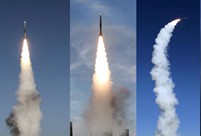

BEIJING, July 2 -- Following stock plunges stretching back more than two weeks, regulators' new measures aiming to restore market confidence seem to have been insufficient.
On Thursday, the Shanghai Composite Index followed Wednesday's drop of 5.23-percent with another dive of 3.48 percent, although analysts and investors had wished for a rebound after the roll-out of regulatory measures.
The drop dragged the index down to a new low since April 3, with the plunge from June 15 to Thursday reaching 24.29 percent.
After the tumble on Wednesday, the Shanghai and Shenzhen stock exchanges were the first to act, announcing a roughly 30-percent cut in stock transaction fees, which account for a very small portion of the total fees for stock trading.
In addition, the China Securities Depository and Clearing Company announced that it will cut stock transfer fees by about 33 percent from Aug. 1.
However, the cuts fell short of general market expectation for a cut in securities stamp tax. This has proved to be a direct and effective approach to pep up confidence, at least in the short term.
When stamp taxes were cut twice in 2008, the Shanghai index surged by more than 9 percent on both occasions.
Li Xunlei, chief economist with Haitong Securities, said although the new move will reduce some transaction fees, the country may still reduce stamp tax, which is fixed at 0.1 percent at present, much higher than the current brokerage fee at around 0.03 to 0.08 percent.
Compared with a 0.03-percent brokerage fee offered by most securities brokers, there is still much room for lowering the stamp tax, Li said.
"Lowering the stamp tax is both highly necessary and probable," he said.
Late on Wednesday, the China Securities Regulatory Commission (CSRC) also made its move by amending previously strict rules on brokerages' margin trading business.
It canceled an item stipulating that investors should pay an additional guarantee within two trading days if the collateral ratio falls below the 130-percent liquidation line, and allowed brokers and clients to negotiate on the term and percentage of additional guarantee, instead of facing forced liquidation.
The amendment also gave investors with less than 500,000 yuan (around 82,000 U.S. dollars) in securities assets, a previous minimum level for conducting margin transactions, the nod to continue.
Margin trading allows investors to buy securities with cash borrowed from brokers using other securities as collateral, or sell short with stocks borrowed from brokers. Forced liquidation will happen if an investor's account fails to meet margin trading requirements.
The recent plunges have frequently been blamed on massive forced liquidation of margin trading or similar activities.
Earlier this week, the China Securities Finance Corporation, which provides margin trading services to securities brokers and monitors the health of the business, said that the amount of forced liquidation for margin trading by securities brokers was small, and its pressure test showed the collateral ratio for those margin transactions was much higher than the early warning line of 150 percent.
The associated risks are still controllable, the company said.
Chen Bing, head of the margin trading department of the Shenzhen-based Guosen Securities, said the CSRC's measures demonstrate its determination to ensure market confidence.
The recent volatility has reduced the collateral ratio of some investors, and the new rules will grant them more room to wait for a rebound, she said.
"I believe a new period of optimism will eventually come after the panic," Chen said.
 4-year-old cute 'monk' spends summer holiday in temple
4-year-old cute 'monk' spends summer holiday in temple College graduates shining on the red carpet in Nanjing
College graduates shining on the red carpet in Nanjing PLA soldiers launch guided missiles in confrontation exercise
PLA soldiers launch guided missiles in confrontation exercise One woman’s fight against dog eaters
One woman’s fight against dog eaters Beautiful and smart - post-90s college teacher goes viral
Beautiful and smart - post-90s college teacher goes viral Top 10 luxury houses in the world
Top 10 luxury houses in the world  National Geographic: best photos during journey
National Geographic: best photos during journey Couples who engage in meaningful and deep conversations are happier
Couples who engage in meaningful and deep conversations are happier Maldives resort rated best hotel of 2015
Maldives resort rated best hotel of 2015  Pledging allegiance reinforces Constitution
Pledging allegiance reinforces Constitution  Market falls amid fears about unregulated margin lending
Market falls amid fears about unregulated margin lending  Mass wedding for North Korean defectors held in Seoul
Mass wedding for North Korean defectors held in Seoul  Orthodox Church sees opportunities in China following enhanced Sino-Russian ties
Orthodox Church sees opportunities in China following enhanced Sino-Russian tiesDay|Week